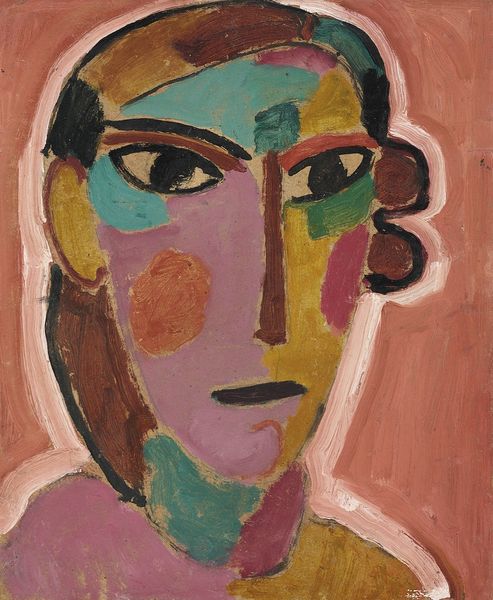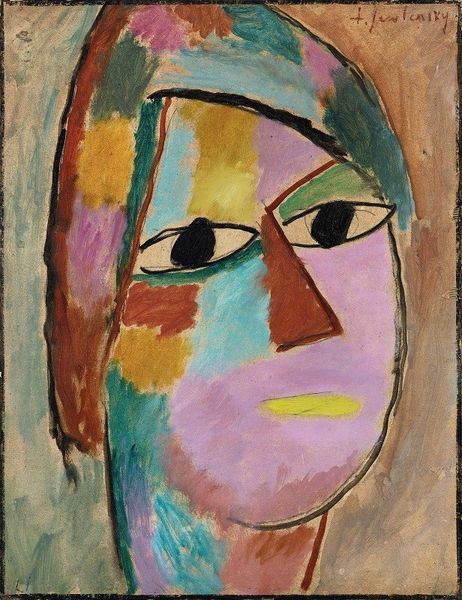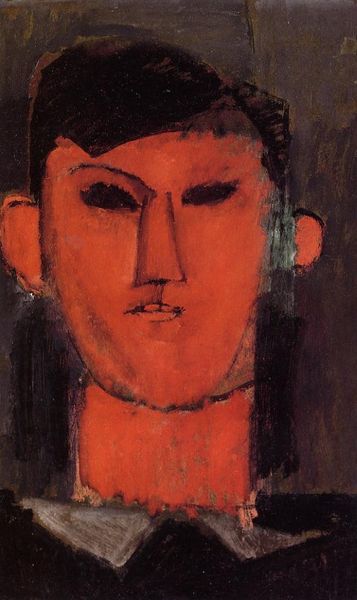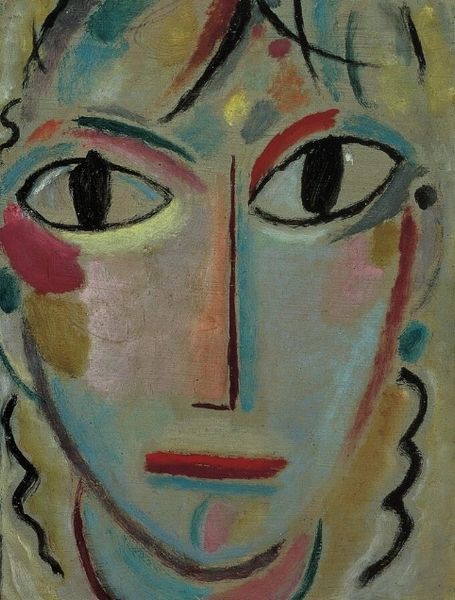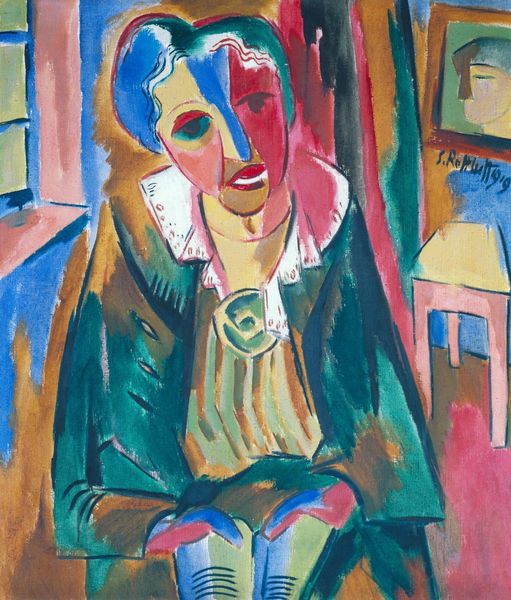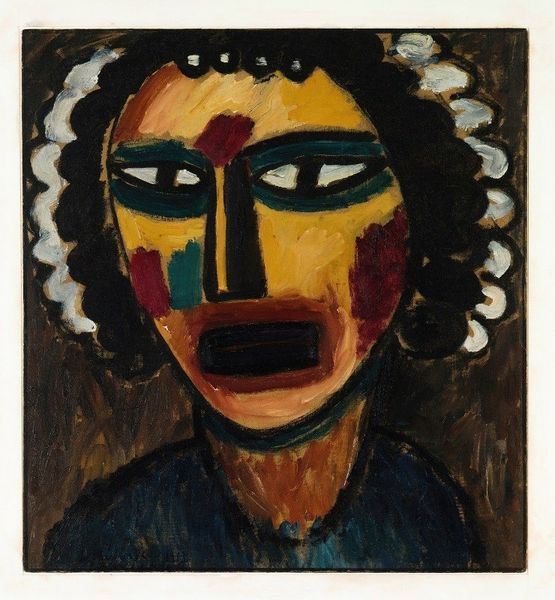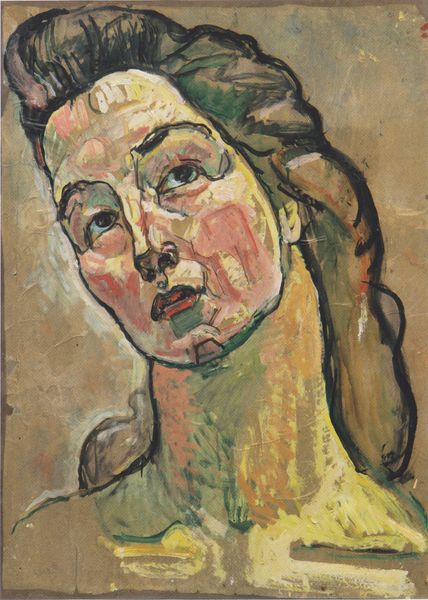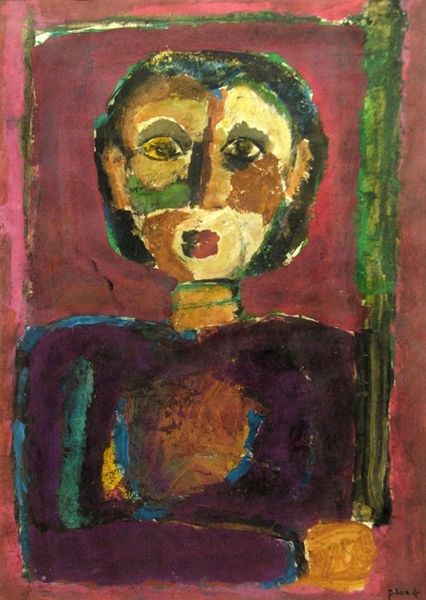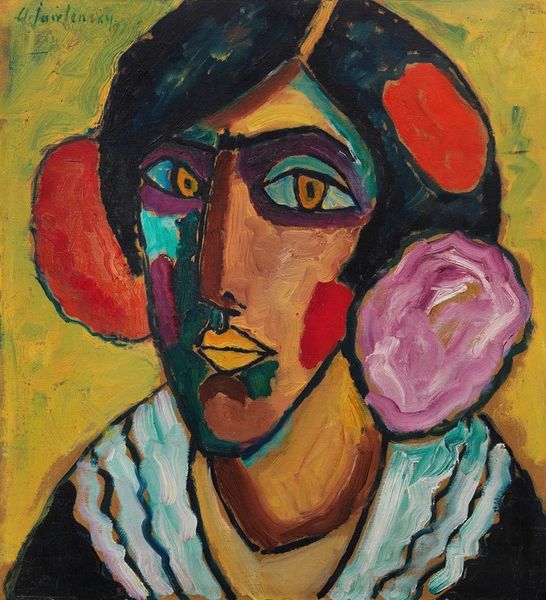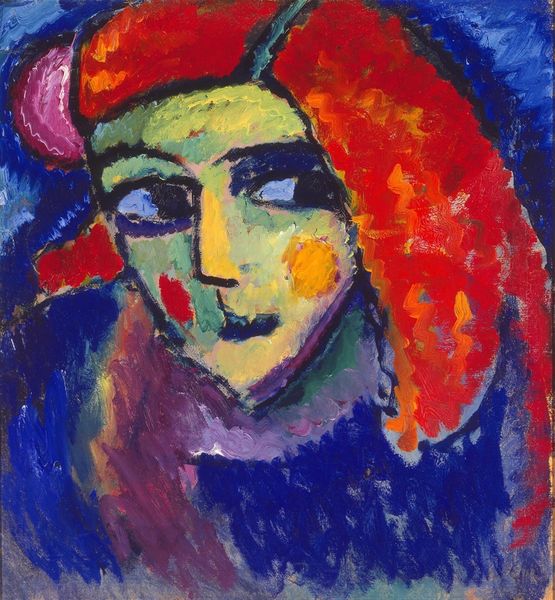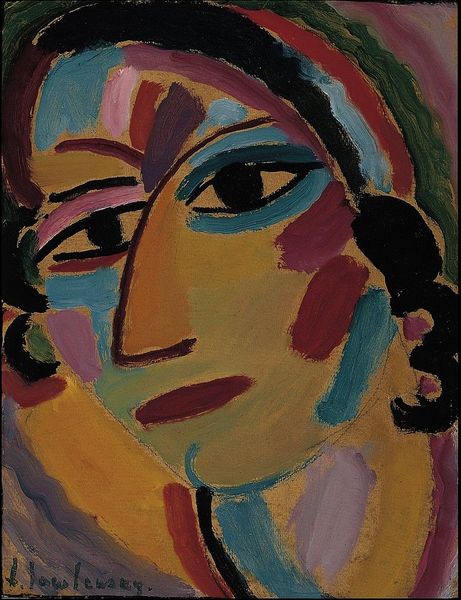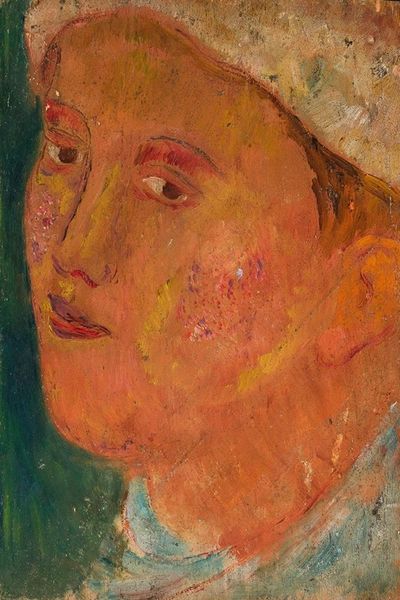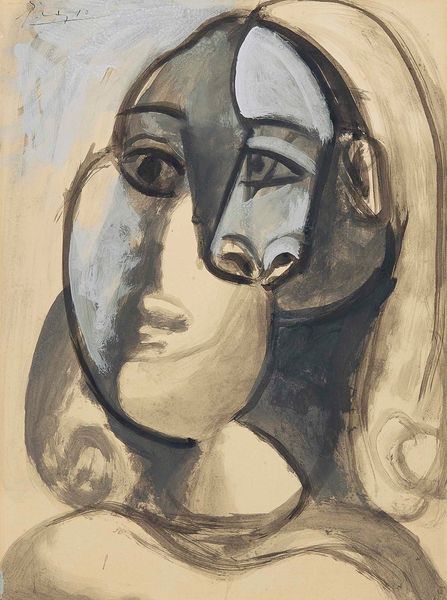
oil-paint
#
portrait
#
self-portrait
#
oil-paint
#
oil painting
#
expressionism
#
portrait art
Dimensions: 26.5 x 18.5 cm
Copyright: Public domain
Editor: Here we have Paula Modersohn-Becker’s "Self-Portrait," painted in 1907, using oil paint. The brushstrokes are so bold, almost sculptural, and the pink skin tones are striking. How do you interpret this work within its historical context? Curator: This self-portrait is powerful precisely because it defies conventional depictions of women at the time. Consider the historical moment: the early 20th century. What statements do you think she's making about the female gaze, the female experience? Editor: I suppose the direct gaze avoids idealization, maybe signaling a refusal to be passively observed. Is the simplicity a form of rebellion, too? Curator: Absolutely. Modersohn-Becker was pushing back against the established patriarchal structures within the art world. The direct gaze challenges the passive female subject, presenting herself as an active agent in her own representation. Furthermore, look at her contemporary, Käthe Kollwitz. How do their artistic statements differ and align in challenging the societal norms of the time through their artwork? Editor: Kollwitz also portrayed women with striking realism, but more with a sense of grief and struggle, whereas Modersohn-Becker, even in its starkness, exudes an almost defiant confidence. The pink hues feel assertive in that sense. Curator: Exactly. It’s also important to remember that this was painted during a period of significant artistic experimentation, with movements like Expressionism gaining traction. So her style contributes to a larger questioning of representation in art, of seeing, of identity. I would pose this: What would modern, post-structuralist and feminist theorists say when dissecting the painting's message? Editor: That's fascinating! I'm beginning to appreciate how this self-portrait is not just a depiction, but also an artistic and political declaration. Curator: Precisely. This painting is one example of an enduring dialogue challenging traditional art history, which opens exciting avenues for current debate.
Comments
No comments
Be the first to comment and join the conversation on the ultimate creative platform.

